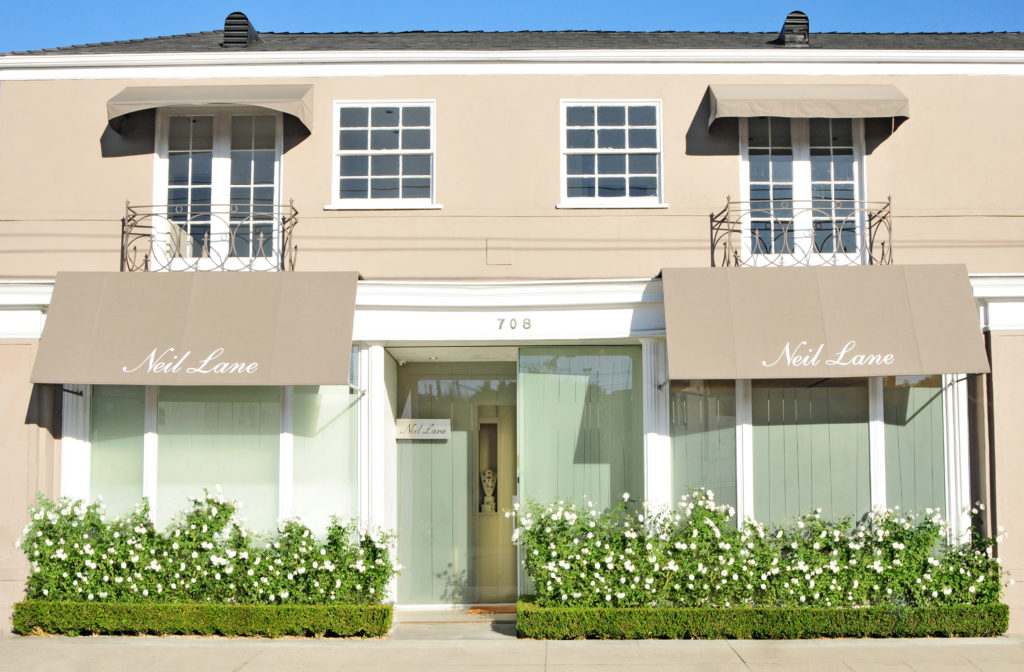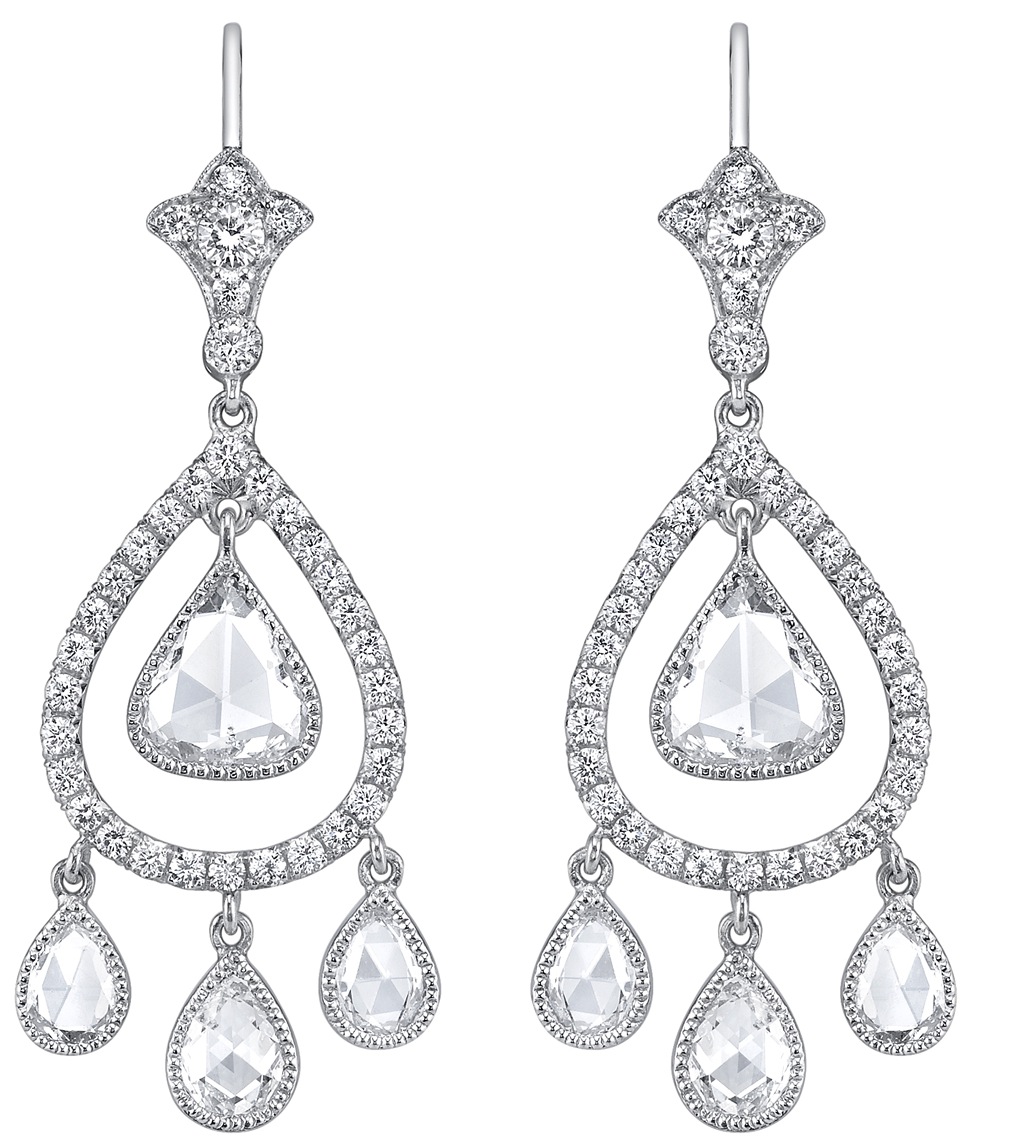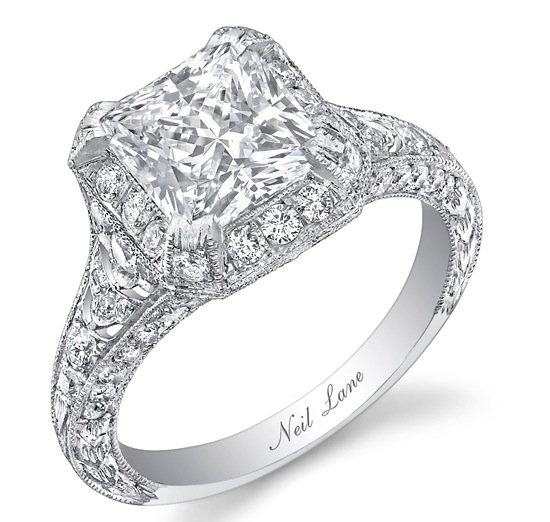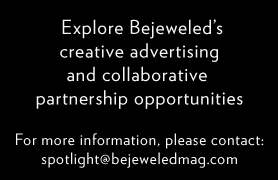Neil Lane: Collecting Legendary Jewels and Dressing Hollywood Legends
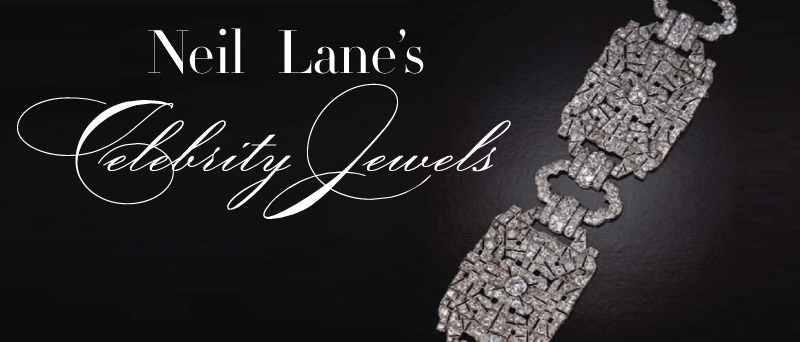
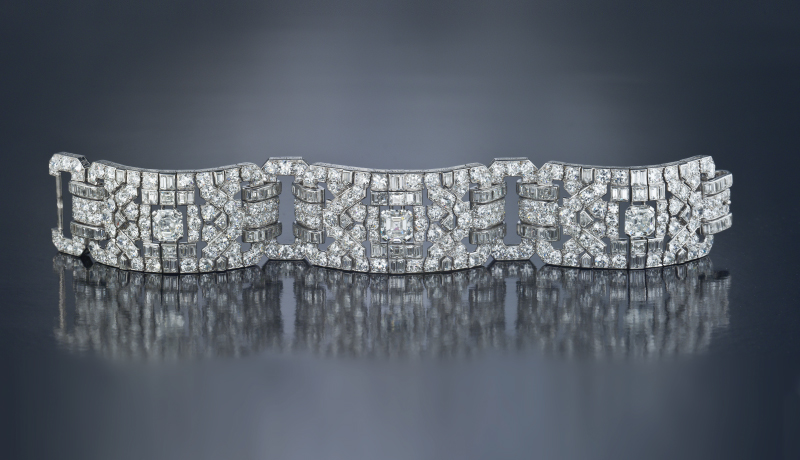
Van Cleef & Arpels Diamond bracelet, circa 1920s
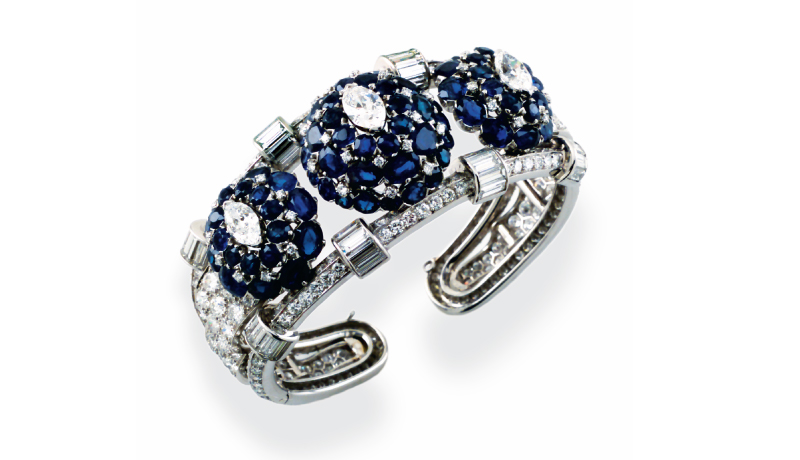
Greer Garson’s Trabert&Hoeffer-Moubassin, circa 1930s
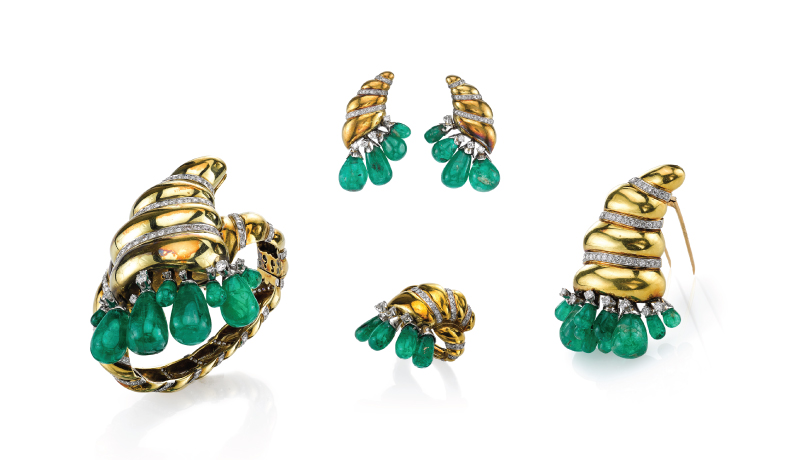
Ginger Rogers suite of emerald and gold jewels, circa 1940s by Paul Flato
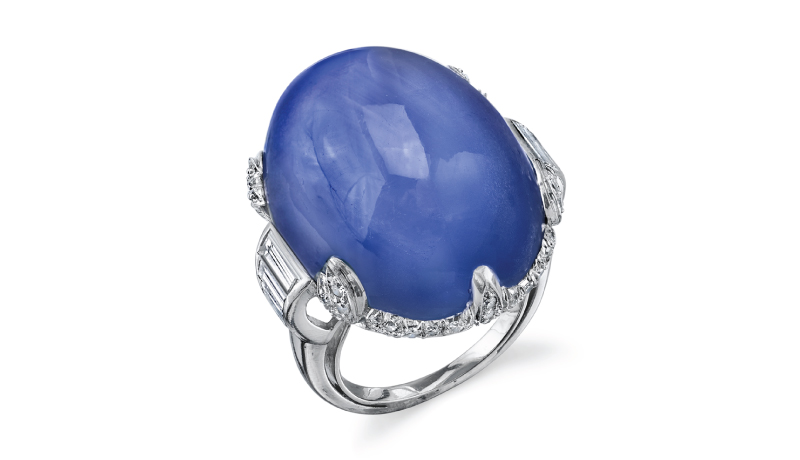
Myrna Loy’s Sapphire Ring
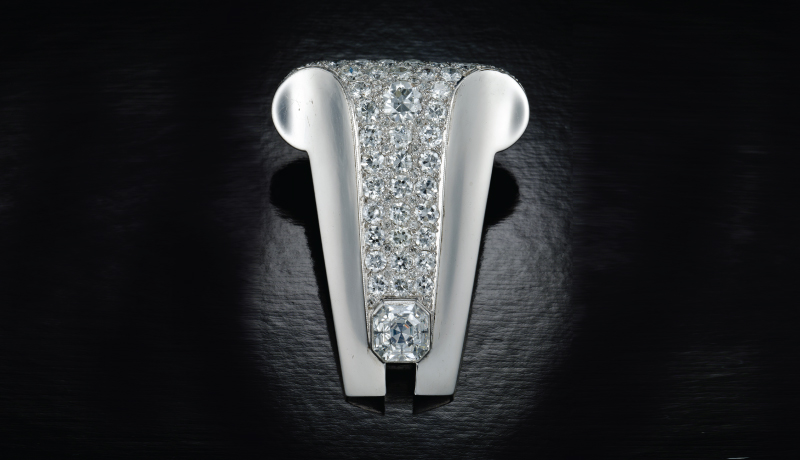
Raymond Templier’s diamond and platinum brooch, circa 1925
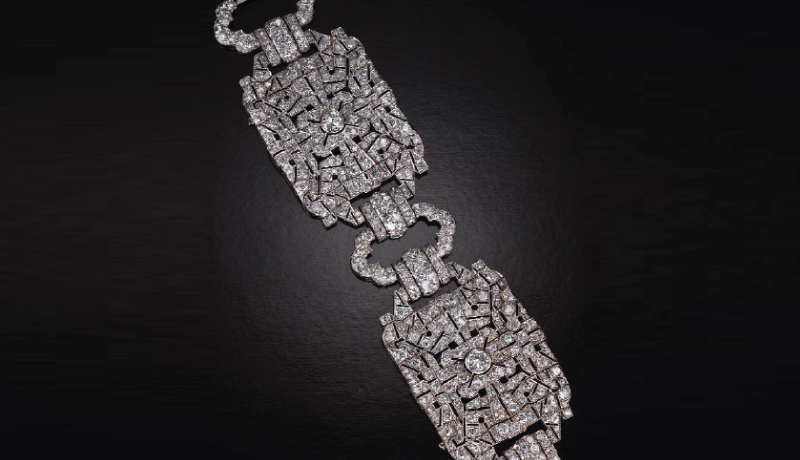
May West’s Diamond bracelet, circa 1930a
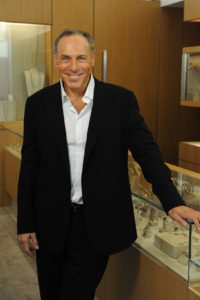
You may know the name Neil Lane as synonymous with creating pieces for Hollywood legends, but he is also a consummate and long-time collector of legendary jewelry. Over the past several decades, since beginning his career, it Is safe to say that Neil has become a Hollywood luminary himself.
He creates pieces for contemporary A-listers Renee Zellweger, Reese Witherspoon and Jennifer Hudson and has since designed engagement rings for a roster of clients that reads like a who’s who of the most celebrated women in film and music. He also lends contemporary and antique jewelry to most prestigious red carpet events and pieces from his own collection to period films.
In his personal collection, he has amassed over 100 pieces once owned by stars of the Silver Screen such as Mae West, Ginger Rogers, Greer Garson and Myrna Loy and designed by renowned jewelers Trabert & Hoeffer- Moubassin, Van Cleef & Arpels, Paul Flato, Suzanne Bellperron and Oscar Heyman.
It could be said that Neil Lane has bridged the gap between Hollywood’s Golden Age of Glamour and the new generation of Hollywood’s A-list.
Talking to Neil is like talking to a friend about jewels—he advises, dishes, and is always down to earth—and each time I speak with him I become more entranced by his stories.
Beth Bernstein: Let’s go back in time; How did your career in jewelry begin?
Neil Lane: I was an art student, living in Brooklyn, New York and I thought that if I really wanted to be an artist, the best place for me to be is Paris. While in Paris, I spent my days at all of the museums: The Louvre, the Musée d’Orsay, the Picasso museum, the Rodin museum—but it was while wandering around that I stumbled on Place Vendôme, where you can find the most renowned jewelry houses. But I was in the windows of the vintage jewelry shops that I became fascinated with the workmanship and the style of the jewels. At that time, we had no shops in New York that focused on these amazing jewels from the past. I guess you can say this where my passion for jewelry was ignited—in Paris, a city filled with romance.
Beth: What was the first important piece you bought?
Neil: I found an enameled brooch in the shape of a dragon with a big pearl in its belly and a diamond in its mouth in a Paris shop in the 1980s. I spent
almost half of the money that I had saved to support myself in Paris for 10 more months. But my attraction to this piece was the first learning point about trusting my instincts- even when I felt nervous. I later learned that this piece had been designed by Lucien Falize.
Beth: Did you take any classes? How did you learn to collect the pieces you began to acquire?
Neil: No I didn’t take classes. I am largely self-taught—with the help of the permanent collections in the museums in both London and Paris, with books and speaking with dealers at markets and in shops. I had some very fine teachers who were willing to share knowledge with me. All novice collectors make mistakes but I couldn’t afford to make a lot of them. I taught myself to look for rare pieces but also to notice if something was similar in more than one shop. If it was, I would pass it up. I learned the trademarks of the significant jewelry houses and grew more confident in my ability to identify a master jeweler’s work-even if the piece was unsigned. This also allowed me to buy pieces below market value.
Beth: When did you begin seriously collecting?
Neil: I would have to say around 1990 and it continued over the years. I think I own approximately 100 rare pieces from the 1880s to the 1940s, including numerous examples that were shown at the World’s Fair and other major exhibitions.
Beth: Were there any other pieces like the Falize in your career? When you knew the piece was from a renowned jeweler but it took you a while to find out?
Neil: Yes. Two stories in particular recall pieces like this. On the advice of the owner of Parisian Art Deco gallery and with $17,000 she lent to me I purchased one of her client’s rare gold-and-ivory necklace. It turned out to be a Lucien Gaillard. It was fabricated of gold-and-ivory in 1907 and it is perhaps one of the most significant jewels that I acquired early on- and of course I have never let it go. This experience taught me that If a piece was an amazing design and extraordinarily made, it was probably the product of an important jewelry house.
My instincts came in handy again 20 years ago. I found a mysterious piece of jewelry- a carved sapphire and diamond necklace. I didn’t know much about it at the time with the exception of the time period but I knew it was special and bought the piece. Soon after, I thought that it had been crafted by Trabert & Hoeffer-Mauboussin but was not 100 percent sure. Four years ago when I visited the Museum of Fine Arts in Boston I was going through the museum’s archive of vintage jewelry drawings and found the original blueprint for this necklace, which finally confirmed that my initial assumption proved to be correct.
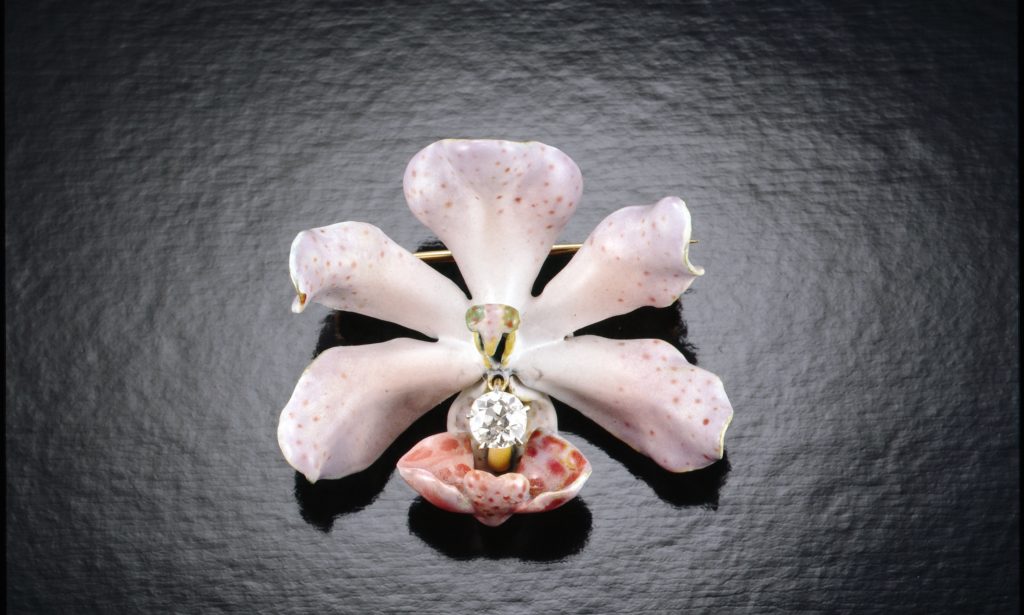
Enamel ,diamond, and gold orchid, exhibited at the 1889 Paris exhibition. Designed by Paulding Farnham for Tiffany & C0.
Beth: What year did you launch your own collection?
Neil: It was 1996. I was very inspired by the details and techniques of old world jewelers and decided to reintroduce diamond cuts that had not been seen in jewelry since the early 20th century, including European cuts and the Asscher, an innovation that was created—and later patented—by the Royal Asscher Diamond Co. in 1902.
Beth: Did the pieces you collected also influence your decision to design?
Neil: I could have never designed my own pieces without all of my years of studying , examining, touching and being surrounded by antique and vintage jewelry.
Beth: Is there a certain period in time that most captivates you?
Neil: I am most inspired by the details and delicate lacy open and scrollwork of Edwardian and Belle Époque designs and their intricate patterns—from an ornate setting to sublime Edwardian refinement. I am also quite taken by the mechanisms and the techniques and geometric forms of the Art Deco movement. I think these two periods can be seen as the most influential throughout my own work. And I love being able to bring the old world craftsmanship as well as the romance of the past to my contemporary designs.
- Earrings and ring from Neil Lane’s contemporay collection
Beth: During the time you continued to build your jewelry line, did you continue to add pieces to your personal collection?
Neil: Yes, One of the next pieces I acquired way Myrna Loy’s star sapphire ring. It was brought to me by her niece. It was set into a platinum-leaf mounting with baguette diamonds on the shank. She wore the sapphire in the Thin Man publicity shots. And the Art Deco style is truly reflective of the golden age of Hollywood. It is thought the ring was created by Paul Flato.
Beth: How did you acquire the pieces from May West’s collection?
Neil: The opportunity to purchase these pieces presented itself to me in the 1990s and I leapt at the chance. It was not just the jewelry I was purchasing, but the love story that surrounded the pieces. Paul Novak had met and fallen for Mae West when he was twenty- he was working as a muscleman in her Las Vegas nightclub act at the time. Mae West was fifty. Novak would be the love of her life, and they stayed devoted to each other until West’s death at the age of eighty-seven. West left all of her jewelry to Novak after her death- all that she had not sold for the war effort. Although he was not well off, Novak refused to sell West’s jewels because they had meant so much to her. When he passed away his safety deposit box was found to contain an extraordinary collection. I acquired several pieces, including a 1920s 40-carat diamond bracelet, which was believed to be one of bracelets the actress wore in the 1930s movie She Done Him Wrong. It is an iconic piece, representing Mae West at the height of her career, dripping in diamonds, drama and glamour.”
Beth: What other iconic pieces do you own?
Neil: Pieces that were designed by Paul Flato and belonged to Ginger Rogers. I also own a piece which once belonged to Greer Garson. Other important and rare pieces include a Suzanne Belperron–designed bangle bracelet, a Raymond Templier platinum-and-diamond Art Deco geometric bracelet, circa 1930, and Cartier and Boucheron pieces from the Art Deco period. Also, a Paulding Farnham–enamel-and-diamond orchid brooch that was once exhibited at the World’s Fair in Paris
Beth: What would it be like to try and build the collection you have today?
Neil: I don’t think I could. Antique, signed and vintage jewelry is in such global demand these days and finding authentically rare pieces is extremely difficult and, when you do, there is no limit on price. Just take a look at the auctions of famous people’s jewelry or the pieces of revered jewelry designers- what they do sell at auction- they go for sometimes 4 to 6x the estimates. But that is not to say you can’t happen onto a rare find or an estate. It’s just much different than when I was first starting out.
Beth: Which pieces from your collection have been lent for films?
Neil: I worked with the award winning and very talented costume designer, Colleen Atwood on the film adaptation of Chicago. The film was set in a time period of glamour and glitter, and recalled the themes of early filmed made in that era. I lent Art Deco wide diamond bracelets to both Renee Zelwegger and Catherine Zeta-Jones- who wore the Mae West stunner in the last scene. I also lent jewels for Queen Latifah and Miramax gave me my first on screen credit- it was all very exciting. But what was even more exciting was that after the film both Renee and Queen Latifah became customers.
Beth: Has that happened with lending to other stars for red carpet or films?
Neil: Oh yes, many times. It happened with Gwyneth Paltrow, Johnny Depp, Reese Witherspoon and Jennifer Hudson, just to name a few.
Beth: Can you name some other clients?
Neil: Warren Beatty bought Annette Bening pieces that were for sentimental occasions. I’ve also designed engagement rings for Jessica Simpson, Ashley Simpson, Nicole Ritchie, Emily Blunt and Ellen DeGeneres.I also did Kate Beckinsale’s wedding jewels. And then there are a number of people who prefer not to be mentioned…
Beth: Do you consider yourself the go-to jeweler for red carpet events?
Neil: Well, how about we say, one of them. It’s wonderful that I can loan the amazing antique and vintage pieces or my own designs depending on what they are looking for. There are definitely a lot of choices here.
Beth: What do you find to be so different about The Golden Age of Hollywood and now?
Neil: That’s really a two-part question. After the talkies, the movies began to have such an influence on the American woman. Due to the fact that the stars of the time owned their own jewelry and often wore it onscreen with amazing costumes, fashion trends were being created on the big screen in live action, rather than in black and white newspaper ads. It was truly revolutionary. The actresses projected glamour—and that is what they were meant to do.
It was also a time of ownership. As I mentioned—the actresses owned many of the jewels they wore onscreen. There were some serious collections back then. And remember, up until the 50s, the Academy Awards weren’t radio broadcast not televised so there were no three hours of E’s red carpet arrivals to watch- or ‘red carpet season.’ The actresses wore their jewels during the day, out to dinner, to parties and for all big occasions.
Today, the celebrities need a different outfit for every award. They are chameleons. They can have ten different looks in one year whereas the stars of the past were recognized by their hairstyle, their hair color and the very specific style of jewelry they wore on and off screen. Today’s actresses are photographed and everything is about what they are wearing in the moment- and it’s about that one magical moment. This is what creates trends these days and affects what American women want to own and wear. And so the actresses primarily borrow rather than own and wear very different looks to different occasions. And as far as the jewelry in film goes, there is really only a big push for amazing pieces in period films and costume dramas.
The glamour has come back on the red carpet but that’s not the same as the glamour of the past.
Beth: What are your favorite films for jewelry spotting and/or jewelry being part of the plot?
Neil: Any film with Claudette Colbert wearing jewelry.
–Desire and Stage Fright and I loved that Marlene Dietrich wore her own jewels in both films.
–Possessed with Joan Crawford
–The Women with Norma Shearer, Paulette Goddard, Roslyn Russell and Joan Crawford –
Beth: Who were your favorite bejeweled icons of Hollywood’s Golden Age?
Neil:
- Jean Harlow
- Marlene Dietrich
- Claudette Colbert
- Joan Crawford
- Mae West
- Lana Turner
- Carole Lombard
Beth: If you could have pieces from five more celebrities in your personal collection, what would be your top five?
Neil: My fantasy collection– if other people didn’t own them and I could afford them would be– Marlene Dietrich’s ruby and diamond Van Cleef & Arpels Bracelet, Marlene Dietrich’s Trabert & Hoeffer-Mauboussin’s emerald jewelry., Gloria Swanson’s Rock Crystal Cartier Bracelets and Marilyn Monroe’s costume jewelry in Some Like It Hot.
Beth: How much do you love what you do?
Neil: I am crazy about it- how could I not be? I get to meet amazing people, dress them for extraordinary moments– when they are nominated for an Oscar or a Golden Globe—and watch couples in love and make their dreams come true with the perfect ring or push present. I get to share in the momentous occasions in their lives.I get so much joy from telling people about pieces in my collection—what time period, why they are so special and who they belonged to. And I enjoy lending old pieces and designing new pieces. And I love being part of the Hollywood dream factory—and in my own way, bridging the gap of then and now.
